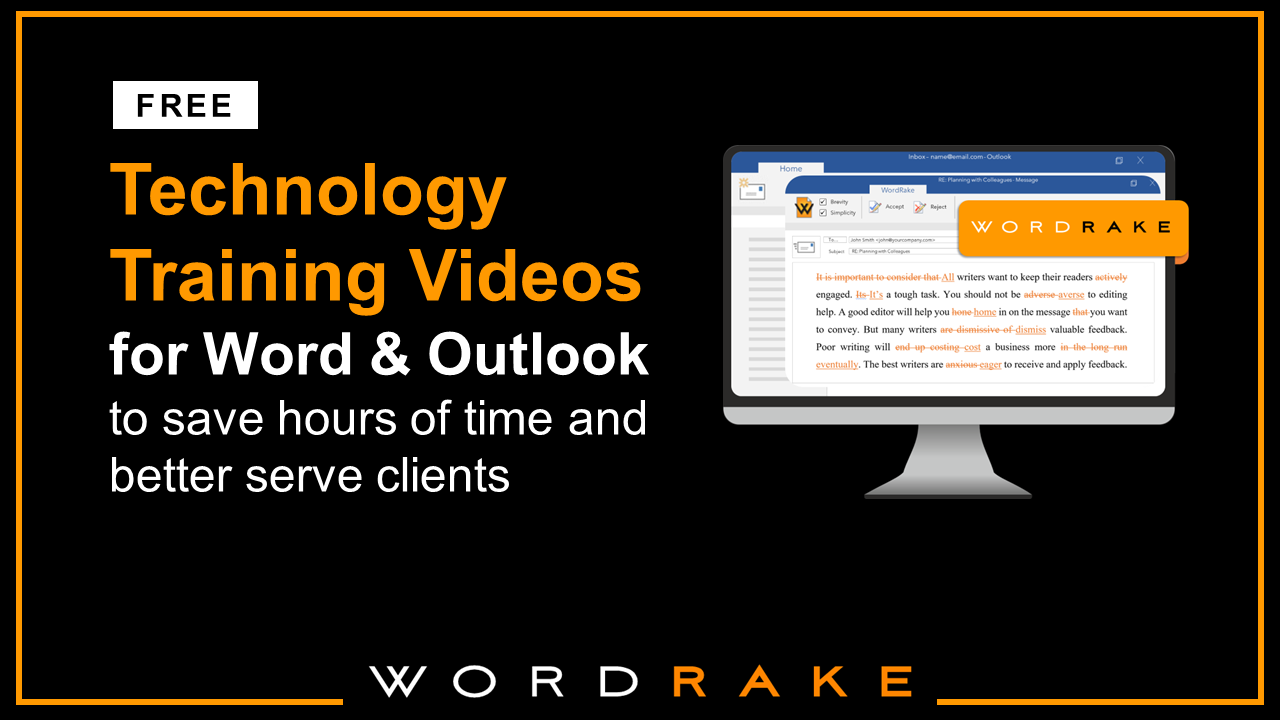Legal writing requires the ability to present clear and persuasive arguments, which is why legal briefs need effective organization and structure. Two tools for enhancing the persuasive power of a brief are the Table of Contents (ToC) and point headings. By leveraging technology and honing organizational skills, lawyers can improve the clarity, coherence, and impact of their writing. Technology can simplify creating, organizing, and editing legal briefs so you can focus on finding the most persuasive arguments. In this article, we’ll discuss the importance of large- and small-scale organization and how to achieve it, as well as technology tools to help you construct a better legal brief.
Understanding the Significance of Organization in Legal Briefs
Organization plays an important role in legal briefs, benefiting both the readers and the writer. It improves readability and understanding, helps with efficient information retrieval, and increases the persuasiveness of your arguments. Additionally, organizing your thoughts promotes clear thinking, streamlines the writing process, and boosts your confidence as a writer. By recognizing the significance of organization and harnessing its power, you can create compelling and persuasive legal briefs that reinforce clarity.
Benefits of Organization for Readers
Organizing a legal brief with a clear structure and logical flow offers significant benefits to readers. By using effective organization techniques, you give them a roadmap to navigate your arguments and understand your reasoning. Here are key advantages:
- Improved Readability: A well-organized brief is easier to read and follow. Readers can quickly grasp the main points of your argument without getting lost in a sea of words. Clear organization eliminates confusion and helps readers focus on the substance of your arguments.
- Improved Understanding: Organization promotes clarity and coherence, enabling readers to understand the relationships between different sections of your brief and how each contributes to the overall argument. With a well-organized structure, readers can easily identify the key issues, legal principles, and supporting evidence.
- Improved Persuasiveness: An organized brief improves the persuasiveness of your arguments. When readers can easily follow your reasoning and see the logical progression of your analysis, they are more likely to be convinced by your position. A well-organized brief shows your ability to present complex information in a logical and coherent manner, further bolstering your credibility.
Impact of Organization on the Writer
Effective organization benefits the writer as well:
- Clear Thinking: The process of organizing your brief forces you to think critically and analytically. It requires you to distill complex legal arguments into concise and coherent sections. By organizing your thoughts, you clarify your own understanding of the issues and identify any gaps or weaknesses in your arguments. Clear organization leads to clear thinking.
- Streamlined Writing Process: A well-organized structure provides a framework for your writing, making the writing process more efficient. With a clear outline or table of contents in place, you can focus on developing each section without feeling overwhelmed. The structure acts as a guide, making sure you cover all necessary points and maintain a logical flow throughout your brief.
- Increased Confidence: When you have a well-organized brief, you can approach your writing with confidence. Knowing that your arguments are presented in a logical and persuasive manner gives you a sense of assurance. This confidence shines through in your writing and can positively affect how readers perceive your arguments.
Effective Legal Writing through Organization
Legal writers must master both large- and small-scale organization: in other words, a clear, logical structure and coherent delivery of content. Let’s discuss these two parts of organization and how point headings connect them.
Large-scale Organization
Large-scale organization is the overall structure of your document. It shapes sections and subsections, reflected in the ToC. This strategic arrangement directs the reader through your argument and emphasizes key points. Thus, large-scale organization highlights important parts of the case and improves understanding.
Small-scale Organization
Small-scale organization focuses on individual sections. It concerns the clarity and coherence of your argument through structuring paragraphs and sentences, and the layering of analysis. Three techniques break down complex legal information into manageable parts:
- 5-part CREAC framework: This acronym stands for: Conclusion to be drawn, Rule or law, Explanation of that rule, the rule as Applied to the case in question, and a more Complete summary of the conclusion. This framework ensures a logical progression from conclusion to application, and back, thus improving argument clarity. (You may be more familiar with an earlier version of this structure called IRAC. Here’s how IRAC and CREAC compare.)
- Conceptual containers: Containers introduce new information and provide context for the reader. They can be found throughout your document and signal what’s ahead. Containers help create connection and flow between ideas, improving document coherence. According to Stephen V. Armstrong and Timothy P. Terrell in their book Thinking Like a Writer: A Lawyer's Guide to Effective Writing, containers “(1) provide a focus; (2) make the information’s structure explicit; (3) begin with familiar information before moving to unfamiliar, new information.”
- Meta-information: Meta-information, as Armstrong and Terrell explain, clarifies the relevance, structure, and importance of your information. By providing it earlier, it helps the reader understand the significance of the information they’re about to read. Meta-information tells the reader why the information you’re about to provide is relevant.
Point headings are declarative sentences in trial memos and appellate briefs that encapsulate the main points of each section. Their position, font treatment, and summative purpose allow them to link large- and small-scale organization. Point headings guide the reader through the structure of the argument, ensuring a logical flow and enhancing overall document coherence. By effectively using large- and small-scale organization techniques, along with point headings, you can create a coherent and persuasive structure in your legal briefs.
Strategically Using Point Headings in Legal Briefs
Advocacy through Point Headings
Crafting persuasive point headings is important in legal writing. These headings are not just labels; they form a bridge between large-scale and small-scale organization, creating a unified, persuasive document. By using point headings effectively, your argument becomes more digestible and compelling.
Point headings serve as signposts, capturing your argument’s main points in a concise and convincing way. They help guide the reader through the argument’s flow, making it easier to understand. The way you craft your point headings can influence how the reader perceives your argument, so phrase them thoughtfully and strategically.
A key area where point headings come into play is the Table of Contents. A well-crafted ToC, aided by persuasive point headings, provides a clear overview of your arguments. Each heading and subheading should encapsulate the crux of its section, serving as a stepping stone for the reader through your reasoning. They should not merely label sections but act as concise summaries, guiding the reader through the structure of the argument and improving overall coherence.
Crafting an effective ToC and persuasive point headings go hand in hand. When designed well, point headings can have profound persuasive power. A reader who skims through your ToC and only reads the point headings should not only understand your arguments but also feel inclined to agree with them. This predisposition can be important for persuading the reader—be they judge, jury, or opposing counsel—to decide in your favor. The best point headings seize this opportunity for persuasion.
Crafting Powerful Point Headings
Well-crafted point headings contribute to the logical flow and coherence of your argument. To create impactful point headings, strive for conciseness, informativeness, and persuasiveness. Follow these tips for crafting powerful point headings:
- Choose an Effective Order: Present your strongest points first to grab the reader’s attention and maintain focus.
- Keep it Short and Useful: Provide enough facts for clear logic without overwhelming the heading. Aim for concise headings, 15 to 35 words, without losing the main points of your argument.
- Use Affirmative Language: Use positive statements to avoid confusion and reinforce that agreeing with your position means your client prevails.
- Maintain Parallel Structure and Consistent Style: Ensure consistency in grammatical form, matching nouns with nouns and verbs with verbs. Maintain a consistent format, style, and terminology throughout your headings.
- Use the Active Voice: Strengthen point headings with the active voice, placing the subject at the beginning of the sentence.
- Incorporate Persuasiveness: Use language that captures the reader’s interest and conveys the essence of your argument. Try the formula “[Conclusion] because [reason].”
- Maintain a Professional Tone: Use balanced and objective language, reflecting legal professionalism. Avoid fragmented or exaggerated language in your point headings.
- Use Full Sentences: Each heading should be a complete and grammatically correct statement encapsulating the section’s main point. Write complete declarative sentences, single-spaced and in sentence case.
Leveraging Technology for Clarity: Word’s Table of Contents and WordRake
Technology has become a valuable partner for improving the clarity and effectiveness of legal writing. With the right tools, you can use technology to streamline your writing process, improve organization, and reinforce clarity in your legal briefs. Improving your technical skills elevates the quality of your legal writing and advocacy.
Word’s Table of Contents: A Tool for Cohesion and Structure
A well-constructed ToC offers a clear overview of your brief’s structure, visually representing the logical progression of your ideas and guiding the reader through your arguments. To maximize the power of the ToC, construct it thoughtfully. Position your arguments and evidence for maximum impact, ensuring each section and subheading contributes to the overarching theme. When you create your ToC, you’ll also evaluate the relevance and structure of each section in it. This important evaluation strengthens your legal analysis skills and leads to more impactful advocacy.
Using Word’s ToC function offers many benefits. It simplifies the creation and management of a dynamic ToC. By applying consistent heading styles throughout your document, you can generate an automatically updating ToC that reflects your brief’s structure. This feature reduces the time spent on manual updates, letting you focus on refining your arguments. You can customize your ToC’s appearance using Word’s options for font styles, indentation, and formatting (learn how to use Styles for better formatting). To insert a ToC, place your cursor where you want to add the ToC, then go to References > Table of Contents and choose an automatic style. (For a tutorial about creating a ToC in Word, watch this video.)
In addition to the ToC feature, Word’s Navigation Pane provides an interactive overview of your document, further aiding navigation and creating visible structure. It promotes careful consideration of the relevance and coherence of each section and subsection, reinforcing the depth and quality of your legal analysis. (We wrote about how the Navigation Pane improves legal writing here).
WordRake: A Tool for Clarity and Conciseness
Editing for clarity is key to writing a persuasive legal brief. Clear, concise writing and well-structured organization inherently go hand in hand. By eliminating unnecessary jargon, complex wording, and any extraneous content, each sentence and paragraph of your brief serves a meaningful purpose. This strategy improves the brief’s clarity and its overall organization, which helps the reader focus on your key points without cognitive overload.
Technology can serve as a powerful ally in your pursuit of writing clarity. Software like WordRake simplifies legal language. By analyzing your work, WordRake identifies and suggests improvements, focusing specifically on eliminating unnecessary words, clarifying ambiguous sentences, and enhancing style overall. Clear and concise writing helps grab readers’ attention, guide readers through your reasoning without confusing them, and convince them of your argument, so it’s worth taking the time to edit your brief carefully.
Writing to Win: Integrating Clear Thinking and Organization
To write persuasively, you must organize, structure, and edit legal briefs effectively. A well-structured brief reflects logical thinking and encourages the reader to agree with your conclusions. Clear and concise writing lets the reader easily follow the line of argument and trust your command of language and structure. Developing organizational writing skills, including strategic use of point headings, can increase the persuasiveness of your legal writing.
Since clear writing reflects clear thinking, mastering these skills will elevate the quality of your legal writing and demonstrate your professional potential. Using software like WordRake for editing and leveraging Word’s ToC and Navigation Pane will help you focus on creating clarity so your arguments can shine.
About the Author
Ivy B. Grey is the Chief Strategy & Growth Officer for WordRake. Prior to joining the team, she practiced bankruptcy law for ten years. In 2020, Ivy was recognized as an Influential Woman in Legal Tech by ILTA. She has also been recognized as a Fastcase 50 Honoree and included in the Women of Legal Tech list by the ABA Legal Technology Resource Center. Follow Ivy on Twitter @IvyBGrey or connect with her on LinkedIn.










